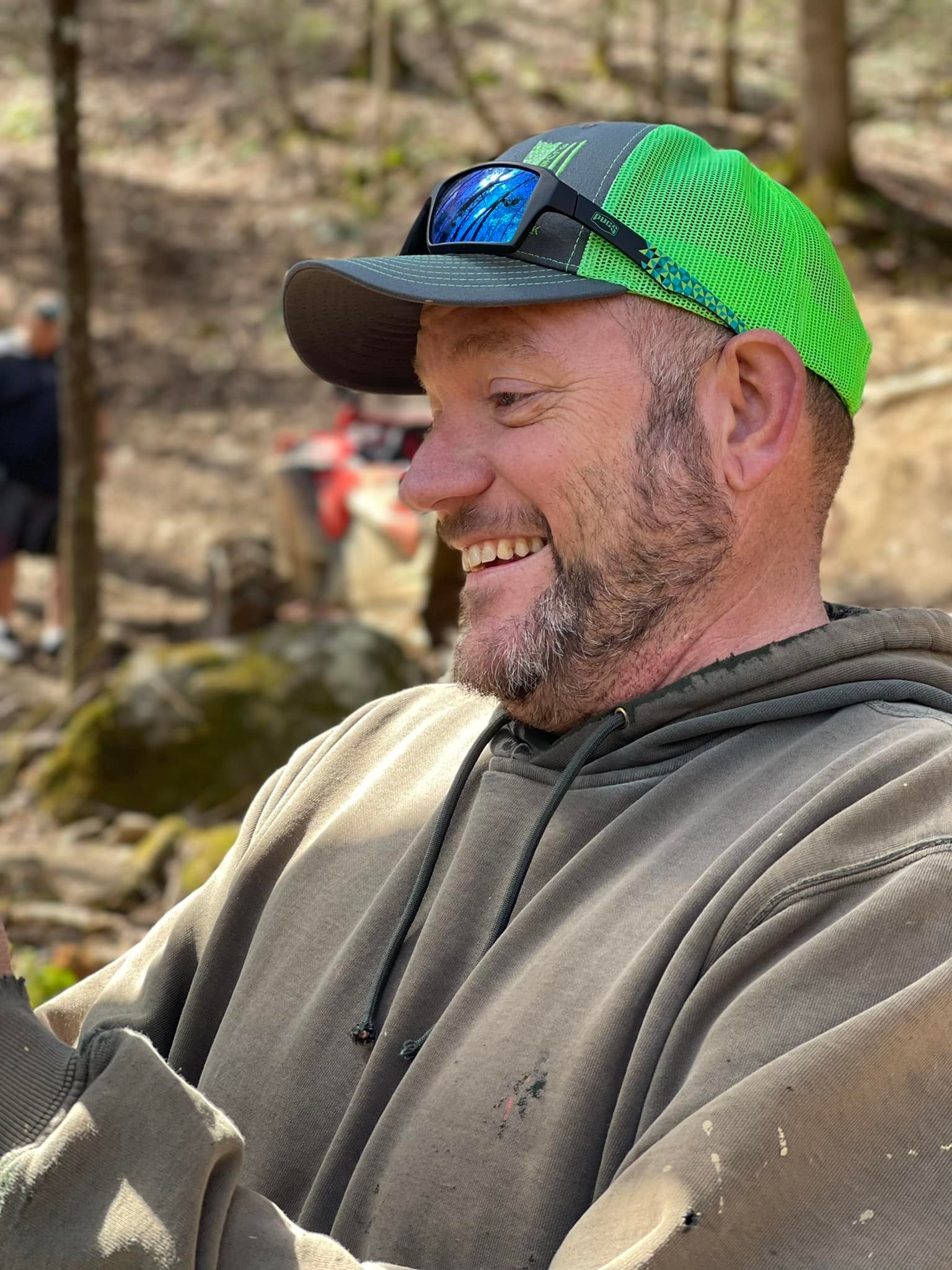The secret behind the taste of tender smoked brisket is simply patience, but it’s worth the wait. After that, it just requires some skill, knowledge, and a little bit of practice to master it. Brisket loves low and slow! Forget the barbecue grill and smoke it at 200 degrees for juicy, flavorful perfection.
If you’ve decided to smoke brisket at 200°F, be aware that while cooking at this temperature is possible, it demands considerable patience and an understanding of potential challenges. Therefore, before you begin, it’s necessary to learn more about the process to prevent turning a culinary challenge into a waste of both time and resources. These instructions are provided for smoking a whole 12-14 pound brisket.
Preparation for Smoking
The process of smoking the perfect brisket at 200°F begins long before the meat hits the smoker. I will try to provide you with a wide base of information that can help to set the path to smoking the amazing brisket. Once you gain the basics, then you push the process of adding your own flavors, technique, and flair. This could be enough information about Preparation for Smoking brisket and try my best for you to make better than restaurant quality brisket at your trusty smoker.
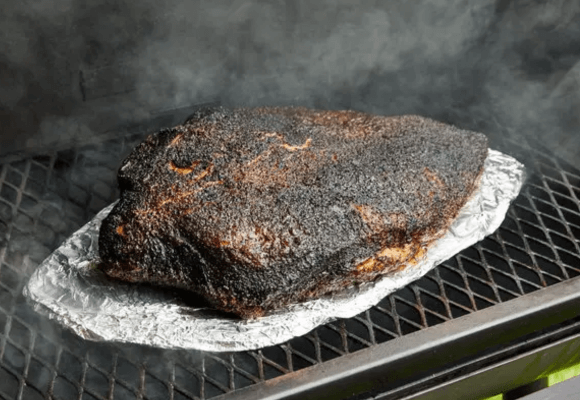
How Long To Smoke A Brisket At 200 Degree F?
Before you begin preparation, it’s important to understand that using low and slow heat means the cooking process will take longer compared to other methods. For instance, if you set the oven temperature to 225 degrees F which is more than 200 degrees F, you should plan for the smoking process to take approximately 12-16 hours.
With a fixed smoke temperature, it often requires 1 to 1.5 hours per pound of meat. Therefore, for a brisket weighing 12-14 pounds, the total smoking time could range from 18 to 21 hours. Use a meat thermometer to ensure the brisket reaches the desired internal temperature, which is typically around 195-205 degrees F for optimal tenderness. Always allow the brisket to rest for at least 1 hour before slicing to let the juices redistribute.
200°F Brisket Journey:
Embarking on a 200°F brisket journey is a rewarding experience that requires patience, precision, and passion for barbecue. Here’s a comprehensive guide through the stages of the 200°F brisket recipe.
Selection of Brisket
I selected a brisket weighing 12–14 pounds but also concern the importance of opting for a brisket with good marbling and a thick fat cap. This fat will keep the meat moist throughout the long smoking process.
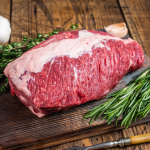
Trimming the brisket is essential for achieving the right smoke flavor in your beef brisket. Use your knife skills, similar to those you apply when preparing ribs. Trim the fat cap to about ¼ inch thick and remove any silver skin or excess fat that won’t render down, as this can hinder smoke penetration. For a low and slow smoking process, trim only a small amount of fat. In contrast, for hot and fast brisket cooking, it’s recommended to remove more fat between the flat and the point because there is less time for the fat to render down.
After trimming your brisket, you’re ready to prepare it for seasoning. If this is your first slow-cooked brisket, I highly recommend keeping it as simple and classic as possible. I usually opt for a straightforward brisket rub of kosher salt and coarse ground black pepper to enhance the meat’s natural flavors. When combined with smoke, these ingredients can impart an amazing flavor and a great texture to the outside of the brisket. If you wish to add an even richer flavor profile, you might consider including spices like garlic powder, onion powder, and paprika for added complexity. Apply the rub evenly, ensuring all surfaces are covered.
The Smoking Process:
Start by preheating your smoker to a steady 200°F. Achieving and maintaining a consistent temperature is most important for the low and slow cooking process.
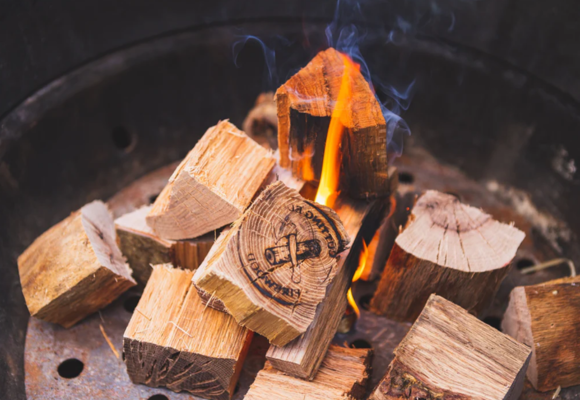
Best Wood
Opt for high-quality wood chips or chunks that complement beef. Personally, I prefer cooking brisket over hickory as the main wood. However, oak and mesquite are also great options for brisket but avoid to use softwood. Hickory generally provides a long-lasting heat source. The main concern is that hickory is heavy, hard, and has a strong flavor. To balance this, I often add some fruit wood, such as pear wood. These combined flavors complement the beef without being overwhelming, and pear wood adds an amazing flavor to the brisket.
Brisket Temp smoker
Aim to maintain the smoker’s temperature around 200 degrees F, as cooking below this temperature is a slow method for brisket. Slow and low cooking gives you ample time to manage the fire, achieve the right temperature, and learn how to use the smoker effectively. Use vents, if available, to regulate airflow and control the temperature. Avoid opening the smoker frequently, as this can lead to significant temperature fluctuations, potentially extending more cooking time and affecting the meat’s tenderness.
After setting the temperature, it’s important to maintain the smoker’s moisture by using tools such as a water pan. Adding water and a bit of olive oil to the pan can help maintain moisture inside the smoker.
Smoking Brisket
Place the brisket in the smoker fat side up, facing towards the firebox. This positioning allows the thick, fatty point to absorb the brunt of the heat from the fire without drying out.
Internal Temp
If you have a remote thermometer, insert it into the center of the brisket, directly into the meat, avoiding the fat, then close the lid. After that, you’ll need to manage the temperature according to your specific smoker. Different types of smokers—electric, charcoal, wood, pellet, or gas—require unique methods for heat management. Familiarize yourself with your smoker’s instructions and controls. Managing temperature in electric, pellet, or gas smokers can be much easier compared to charcoal and wood smokers. This doesn’t mean charcoal and wood smokers are difficult to manage; it simply means they require more attention. Additionally, using a wireless thermometer can provide notifications directly to your mobile phone, making monitoring easier.
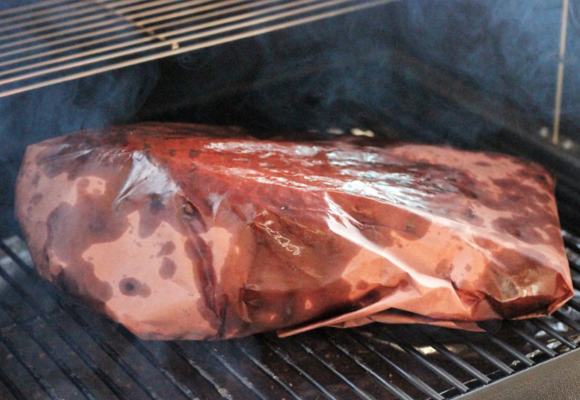
Wrapping Brisket in Butcher Paper
When you decide to wrap your brisket, opt for butcher paper—a method most pitmasters recommend over wrapping in foil (it’s not mean you won’t cook by use of foil, you can cook brisket at Texas Crutch style brisket ). One thing I’ve learned from the BBQ community, which I now use and recommend, is pink (sometimes referred to as peach) butcher paper, especially if it’s intended for BBQ purposes. Do this once the internal temperature hits about 150°F to 170°F, especially if you notice the temperature stalling. Make sure the paper is wrapped tightly around the meat to minimize air pockets, which can impact cooking times and moisture retention. Continue cooking the brisket until it reaches the desired internal temperature, typically between 195°F to 205°F, using tenderness as the ultimate indicator of doneness.
Brisket Resting Time
The resting time for brisket is a final step in the smoking process, often overlooked by beginners. After the brisket reaches the desired temperature and feels pliable and soft in your hands, it’s the right time to remove it from the smoker. Allowing it to rest properly before slicing is essential. If it’s nearing mealtime, you can place the brisket on a baking sheet and let it rest for about minimum 1 hour at room temperature. As the brisket rests, the meat’s fibers relax, making it more tender. This process allows the brisket to cool down from 200 degrees F to around 165 degrees F or so on, which makes it more enjoyable to eat.
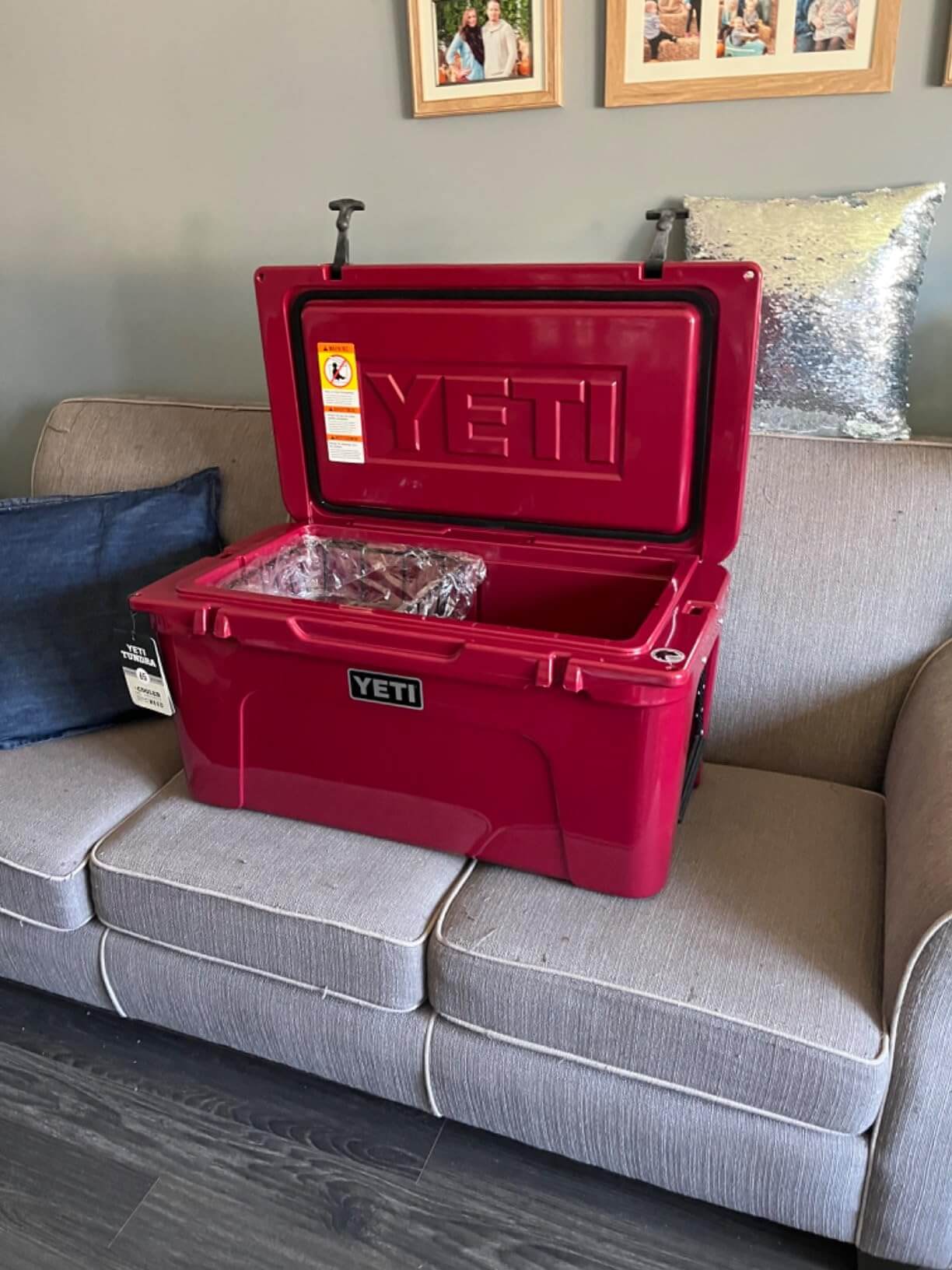
For longer resting periods, you can insulate the wrapped brisket further by placing it in a cooler (without ice) or wrapping it in towels. This makeshift “cooler method” can keep the brisket warm for several hours without overcooking it. I have personally kept brisket warm this way for up to 5 hours, ensuring it stays hot and ready to serve whenever you’re ready to serve guests.
When you ready to eat transfer wrapped brisket to the cutting board and remove the butcher paper. Slice the brisket against the grain into thin slices. This makes the meat more tender and easier to eat. Serve warm with your favorite barbecue sides.
Benefits of smoking at 200°F:
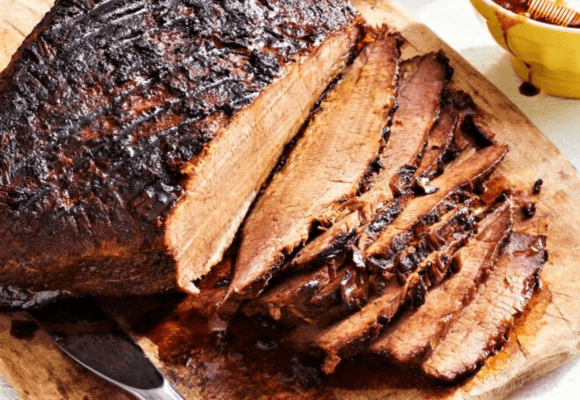
Smoking brisket at 200°F offers several benefits that contribute to the quality, flavor, and texture of the final product.
- Cooking at a lower temperature reduces the chances of overcooking the brisket. This gives pitmasters, especially those new to smoking, a larger window to monitor and adjust the cooking process as needed.
- Maintaining a steady 200°F is often easier and requires less constant adjustment than higher temperatures, especially in coal smokers making for a more enjoyable and less labor-intensive smoking experience.
- The extended time in the smoker allows the brisket to absorb more smoke, which enhances its flavor. The low temperature also means the surface doesn’t form a thick crust too quickly, allowing smoke to penetrate deeper.
- The bark, or the flavorful crust that forms on the outside of the brisket, develops best when exposed to smoke and heat over a long period. Smoking at 200°F allows for the gradual buildup of this crust, resulting in a perfect bark that’s rich in flavor without being overly charred or hard.
Challenges to be aware of:
Smoking brisket at 200°F, while rewarding, comes with its own set of challenges that require attention and strategy to overcome. Need to prepare you for a more successful smoking experience. Here are some challenges to be aware of:
- While low-temperature smoking is designed to retain moisture, there’s still a risk of drying out the meat if the brisket is not properly prepared or if it’s left to smoke for too long without adequate protection, such as wrapping in butcher paper or foil.
- Not all smokers are capable of maintaining the low, steady heat required for smoking brisket at 200°F. Cheaper or poorly insulated models might struggle with temperature control, impacting the cooking process.
- Smoking at such a low temperature significantly extends the cooking time (Expect more than 18 plus hours). This can translate into very long smoking sessions, especially for larger briskets, necessitating early starts and potentially overnight smoking.
Strategies for Overcoming Challenges
- you have enough fuel and time to manage the extended cooking process.
- Invest in a good wireless meat thermometer to monitor your brisket without opening the smoker.
- Consider wrapping your brisket in butcher paper during the stall to help retain moisture and push through the temperature plateau.
- Be ready to adjust your plan based on the brisket’s progress and external conditions. Sometimes, minor adjustments to temperature or cooking time are necessary.
- Each smoking session is a learning experience. Take notes on what works and what doesn’t for future reference.
